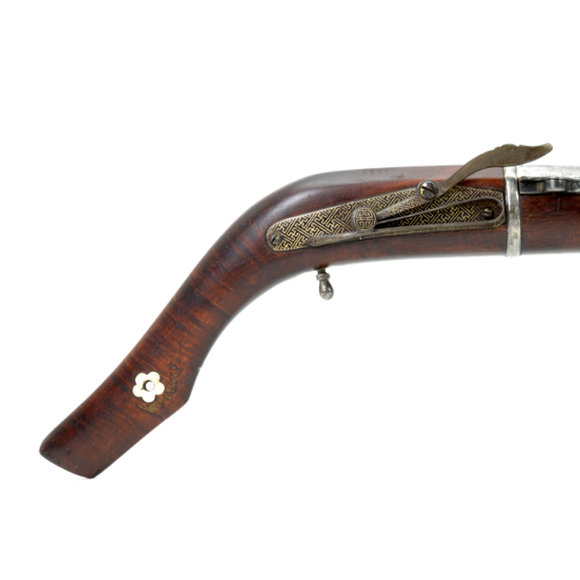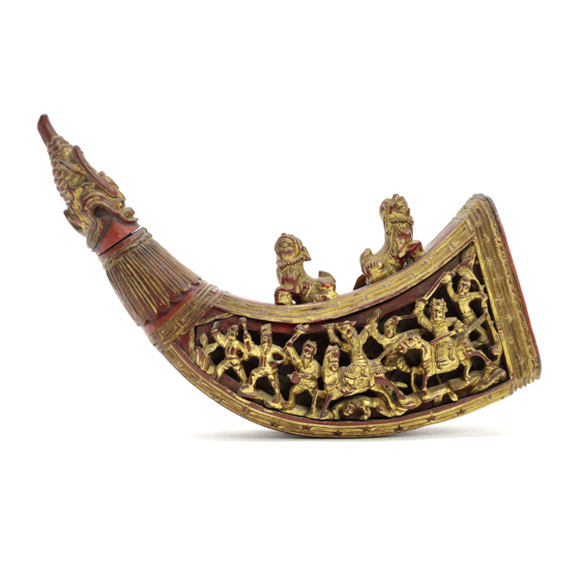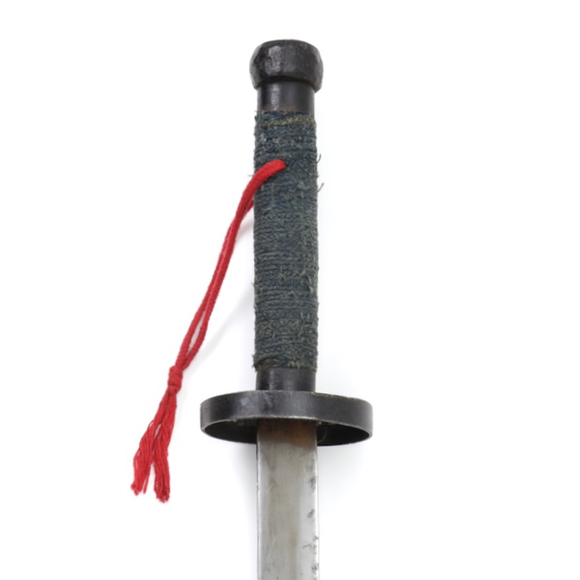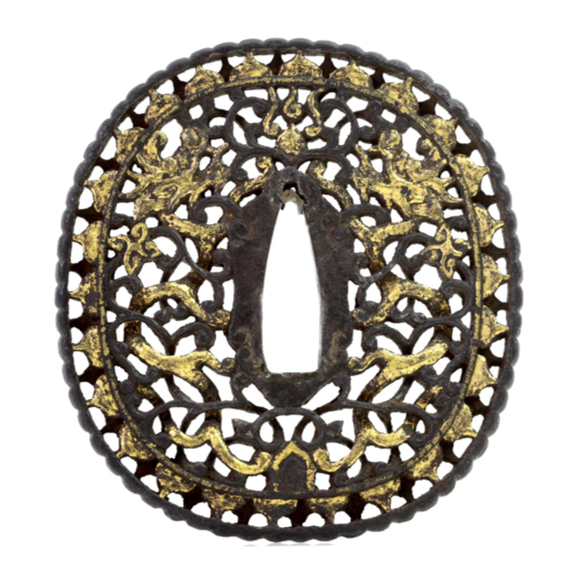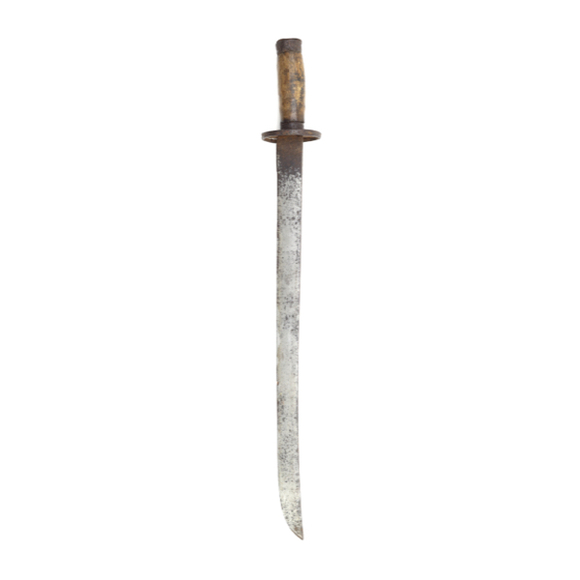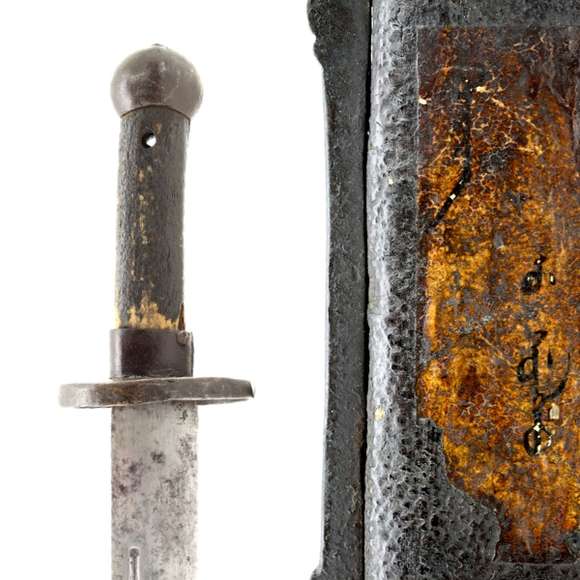Language: Mandarin Chinese
Source: Classical literature
Description
Dāoqiào zhōngshù (刀鞘中束) literally means "saber scabbard middle binder".1 They are the two suspension bands that keep the middle of the scabbard together and hold the suspension bar, called dāo shùliáng (刀束樑) or qiàoshàng shuāngyǎn shù (鞘上雙眼束).2
The alternative term yào zi (靿子), literally "leg of boot" was also used to describe these bands.3
The Manchu term is tebeliyeku.
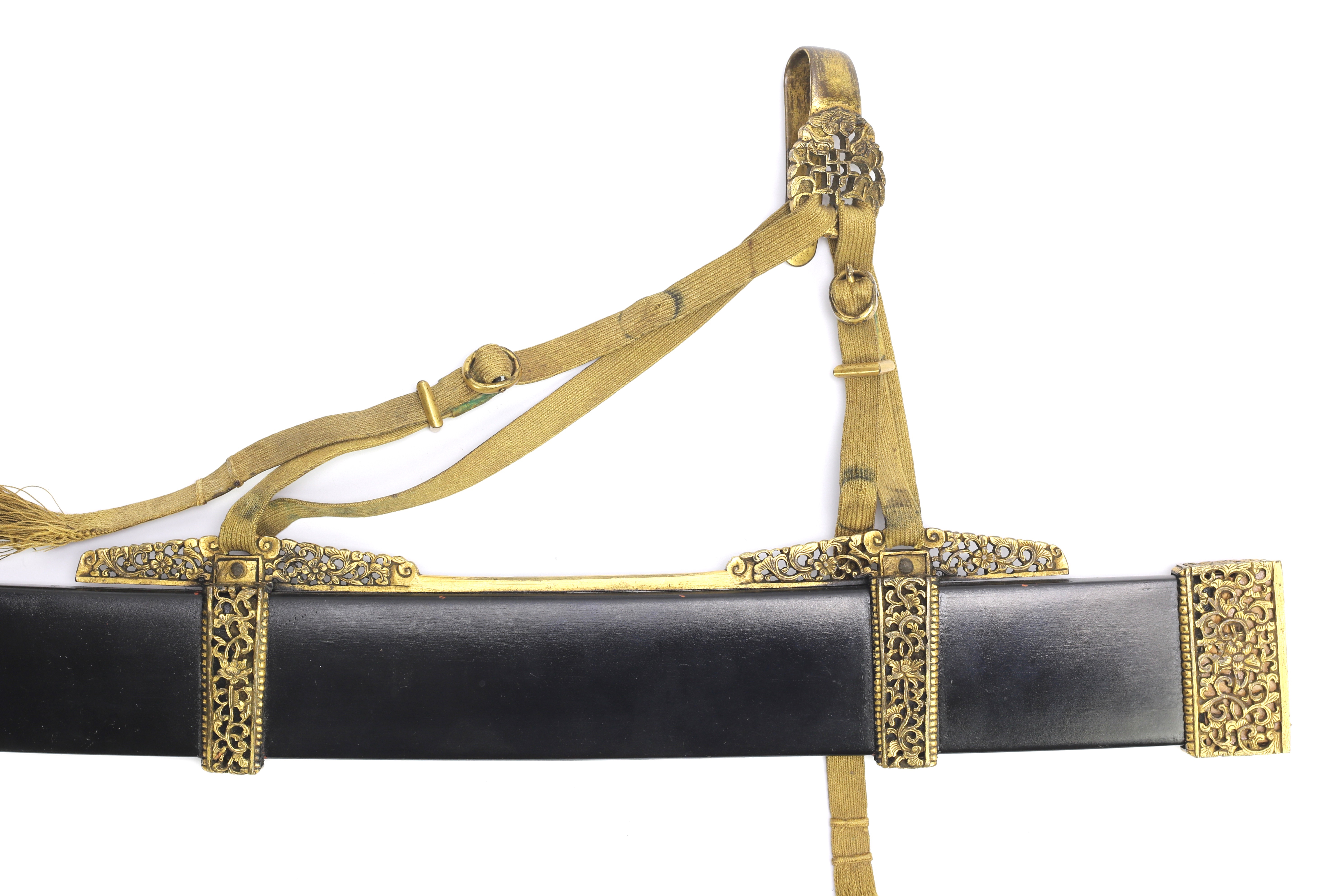
Suspension bands and bar on a very fine Chinese saber of the 18th century.
With its original suspension system with belt hook.
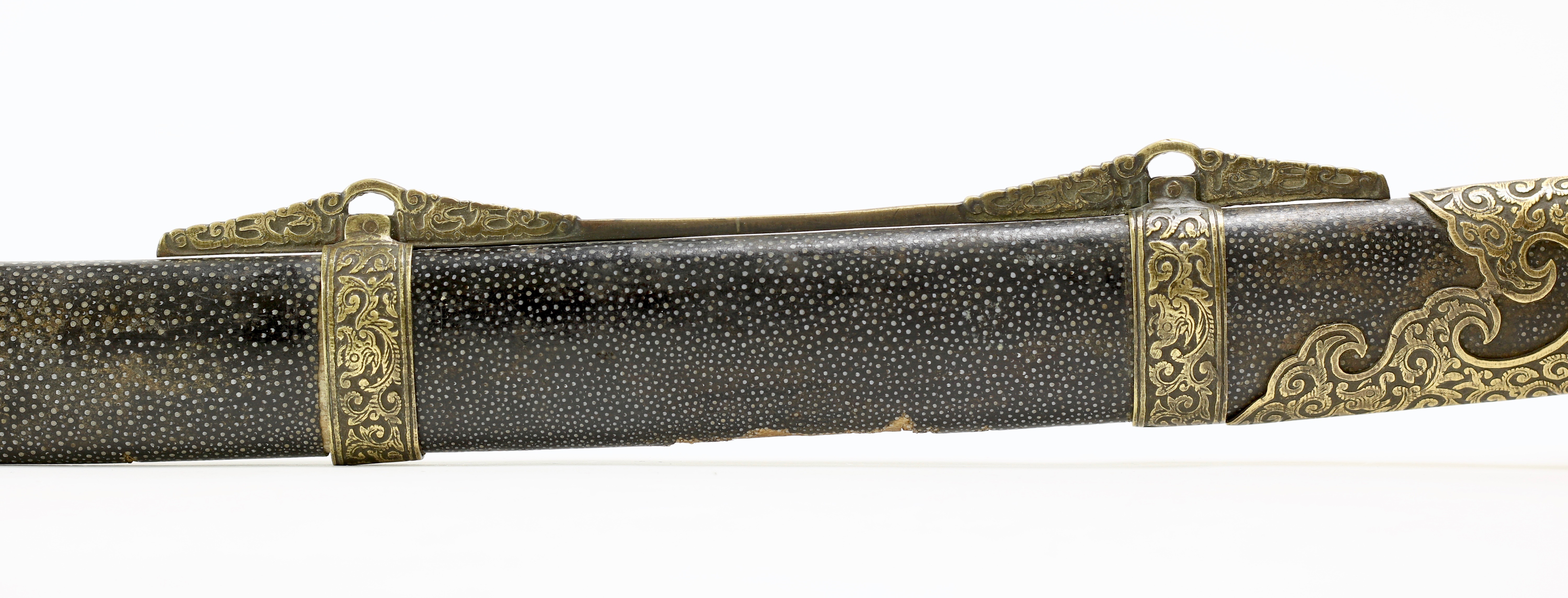
Suspension bands and bar on a 19th century southern saber.
Also see
For a complete overview of saber terminology, see: A Chinese saber glossary.
References
1. Wuti Qingwen Jian (五體清文鑑) or "Five languages compendium". A Qing imperial dictionary in Manchu, Mongolian, Uighur, Tibetan and Chinese of 1766. Published under the Qianlong emperor.
2. Ibid. and Tongwen Guanghui Quanshu (同文廣彙全書) or "Enlarged and complete dictionary" of 1702. A Qing imperial dictionary in Chinese and Manchu, each entry double-checked and approved by the Kangxi emperor.
3. Gongbu Junqi Zeli (工部軍器則例) or "Regulations and precedents on military equipment for the Board of Works" of 1815. A Qing imperial text dealing with the details of arms manufacture.

